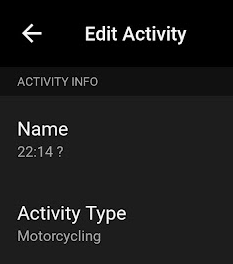I'd like to add 2 settings where the user can set the sport and the sub-sport. However I am not sure exactly how am I allowed / supposed to use these constants. IMHO there's some confusion in the documentation about the min api level: https://forums.garmin.com/developer/connect-iq/i/bug-reports/fix-documentation-of-min-api-level-in-activity-sport_-and-sub_sport_
Secondly am I allowed to combine each available sport with any available sub-sport? For example can I create a session with: SPORT_MOTORCYCLING and SUB_SPORT_INDOOR_ROWING?
And more importantly how do I know either in compile time and / or run-time whether a device supports something? Does it matter at all? Or am I able to use ANY number as :sport and :subSport when creating a session as long as Garmin Connect supports it?
What about Rucking for example (https://forums.garmin.com/developer/connect-iq/i/bug-reports/bug-documentation-or-sdk-missing-recently-added-sports)



